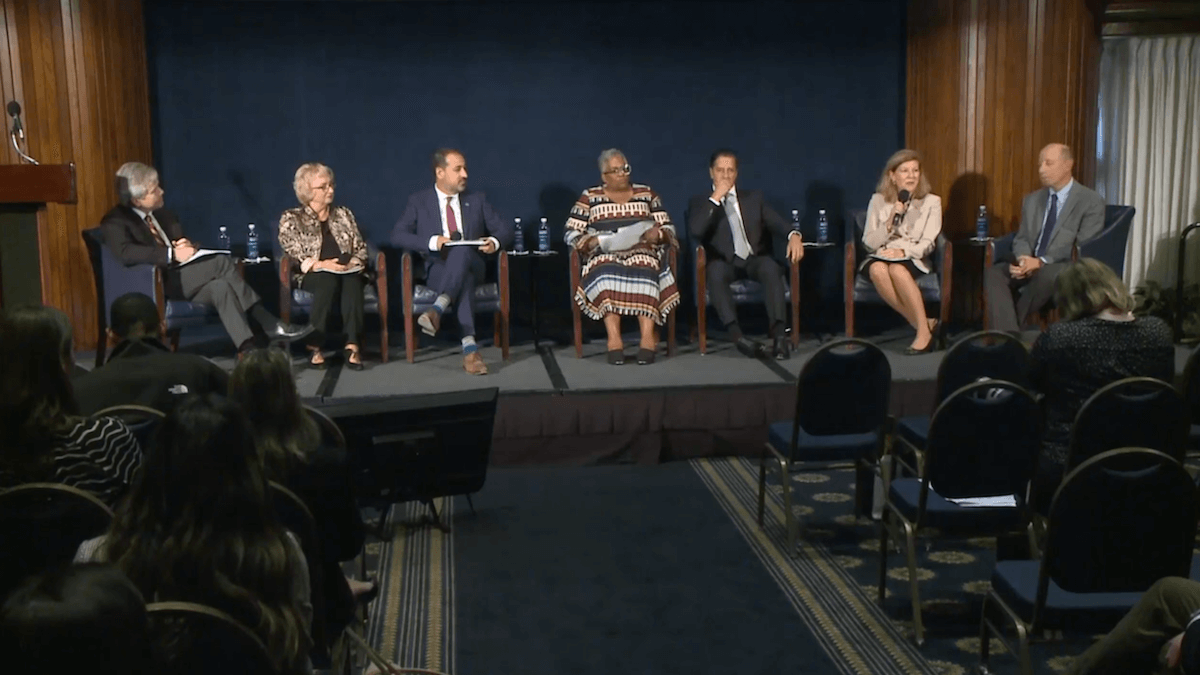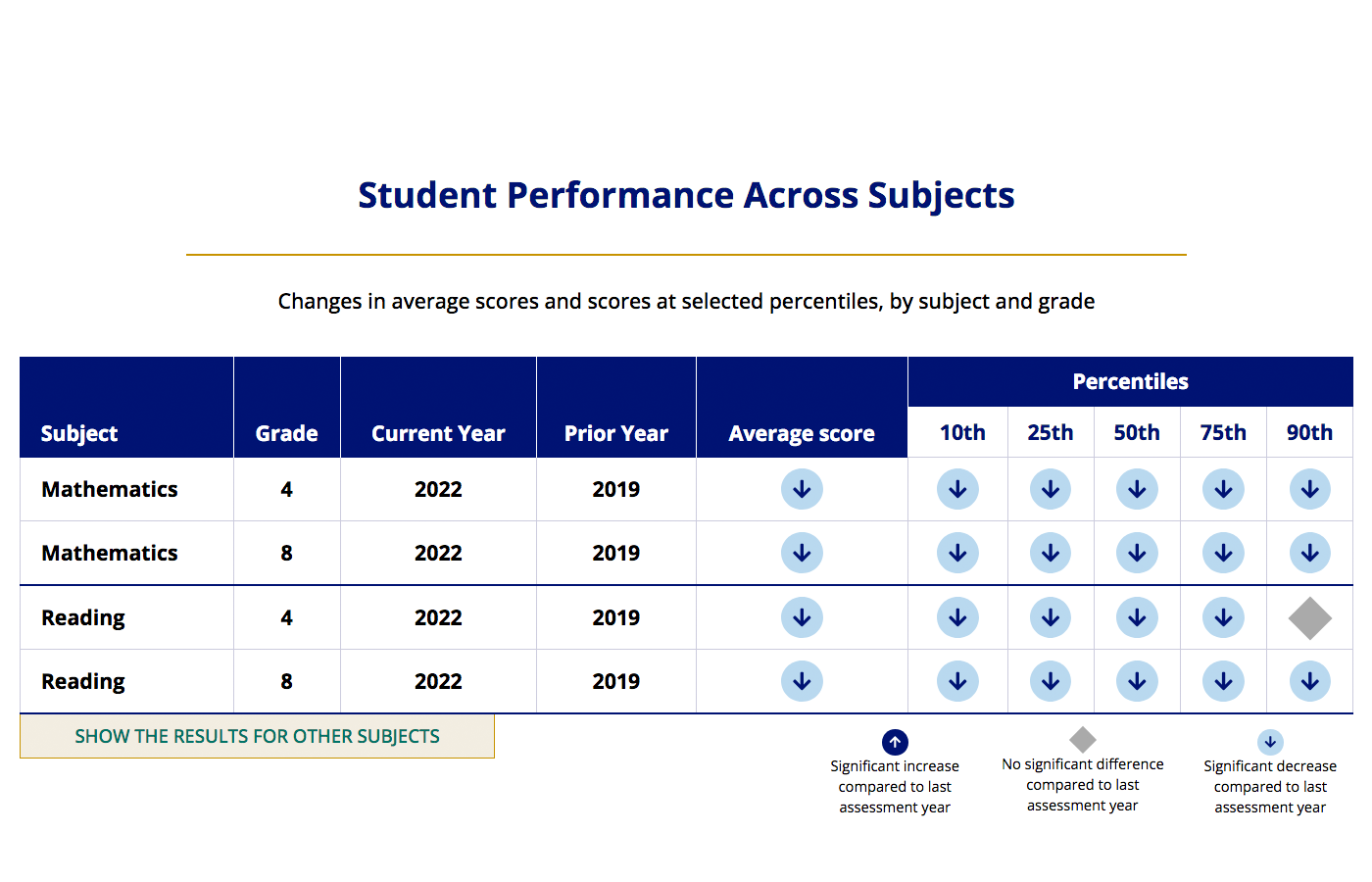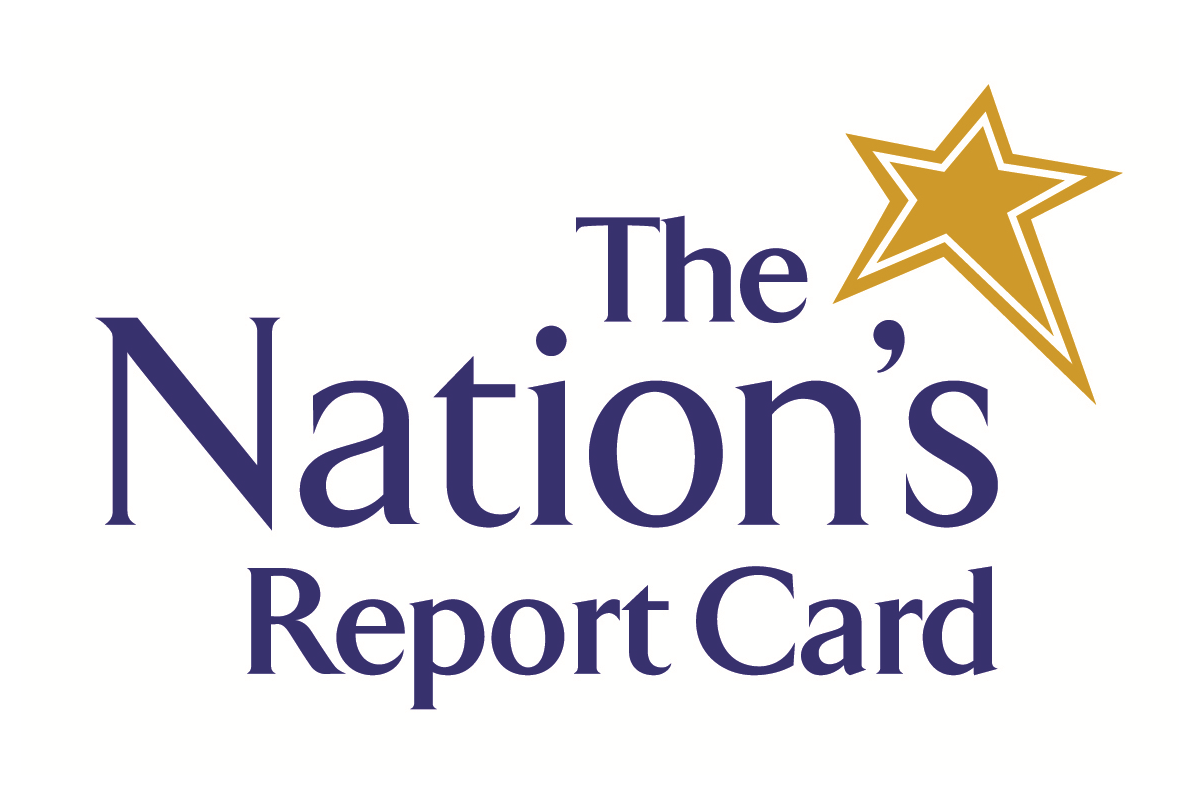The devastating picture presented by the National Assessment of Educational Progress has occasioned a lot of discussion about what it’ll take to overcome two years of pandemic disruption, which followed a decade of stagnant academic achievement. Well, Joel Rose, the CEO and co-founder of New Classrooms, argues that the most important thing we can do is overhaul the “industrial paradigm” of schooling. I’ve known Joel for close to 15 years and have long found him an interesting thinker and New Classrooms an intriguing model. When he offered to share some thoughts on what schools need to do, I decided to take him up on it. Here’s what he had to say.
The headlines were hard to read: NAEP’s assessment of the nation’s 4th and 8th graders revealed that the pandemic wiped out years of learning gains.

Troubling as that may be, the news still largely ignores what was true before the pandemic, when only 11 out of 25 students in a nationally representative 4th grade classroom would have been deemed “proficient” in math—and when only six would remain proficient by graduation.
Learning loss may be more severe, but it is certainly not new.
Addressing what to do about that requires reckoning with the larger question: Why did movements over the last two decades to raise standards, improve educator quality, upgrade curriculum, enable choice, leverage assessment, instill accountability, and increase funding appear to have such a limited impact on college and career readiness?
One potential answer: Nearly all of these reforms left the basic tenets of the industrial-paradigm classroom intact.
That approach, where groups of same-aged students all learn the same thing at the same time with a teacher and (usually) a textbook, was advanced more than a century ago as a means to rank and sort students into different life pathways—effectively a timed, academic obstacle course with real-life implications.
It’s a paradigm that has at least two fatal flaws.
First, it’s unforgiving to those who fall behind. What’s taught is based on one’s age, not what they know. Stumble for any reason, like a pandemic, and it can be hard to catch back up—especially in cumulative subjects like math.
Second, what a student experiences in school is limited by the capacity of the teacher. Like many teachers, I tried to meet each of my students’ unique needs, to design and deliver engaging lessons, to thoughtfully review their classwork and homework, to stay in close communication with parents, and more. That’s what students, families, and taxpayers deserve. But I simply didn’t have the time or resources to sustainably do that.
If meaningful improvement in our overall educational system could be achieved without tinkering with the industrial paradigm itself, we probably would have seen it by now. Yes, the reforms that animated the last two decades can all make a difference. But if national pre-pandemic proficiency gains of 2 percentage points per decade is the best one could hope for, it will take at least a century before the vast majority of students graduate college- and career-ready.
The K-12 sector needs another path that breaks free from these constraints.
There are undoubtedly better ways of “doing school” in the 21st century than what the 19th century architects of the industrial paradigm classroom conceived. Learning today can be more personalized, more reflective of the science of learning, more sustaining for educators, more reflective of what local communities are seeking, and—most importantly—more impactful for students. But those new approaches need to be designed and scaled.
How exactly can that kind of future be brought to life?
To help lay out a path forward, New Classrooms (the organization I lead) partnered with Transcend, an organization that supports schools in implementing new learning models, to release a new report called Out of the Box: How Innovative Learning Models Can Transform K-12 Education. The report centers on the role of model providers: organizations that design more modern approaches to teaching and learning and then support the adoption of those approaches in partnership with like-minded local school communities.
Model providers do not run schools. They are more akin to curriculum organizations that reimagine what students experience when they come to school. But because the models these organizations create can so deeply shape what students experience, both model providers and school operators can share in the responsibility for student outcomes.
Several organizations have been working to bring about the model provider sector. Our own work has centered on developing Teach to One 360, a proof point for what an innovative learning model can be. It uses a diagnostic assessment to generate a precise, personalized math curriculum for middle and high school students that adapts throughout the school year based on individual progress. Most uniquely, 360 then integrates a combination of teacher-led, collaborative, and independent lessons as well as a first-of-its-kind scheduling algorithm so that each day, students access the lessons and peer groups that will best support their progress. (Note: 360 will relaunch in 2023, but an all-digital version called Teach to One Roadmaps is being used in schools today.)
Our experience has helped us understand the conditions required for schools to transition to a student-centered paradigm. It also illuminated the acute barriers that make it harder for more schools to get there. These include underinvestment in educational research and development, inertia within schools and districts that limits innovation, and education policies—most notably around assessment and accountability—that incentivize keeping the industrial paradigm intact.
The industrial paradigm classroom has reached its limits. While policymakers, systems, and school leaders must do all they can to address today’s crisis in learning, they must also begin to develop a vision for a future of schooling that gets out of this box and moves to something better.
Joel Rose holds a B.A. in political science from Tufts University and a J.D. from the University of Miami School of Law.
Frederick Hess is director of education policy studies at the American Enterprise Institute and an executive editor of Education Next.
This post originally appeared on Rick Hess Straight Up.





